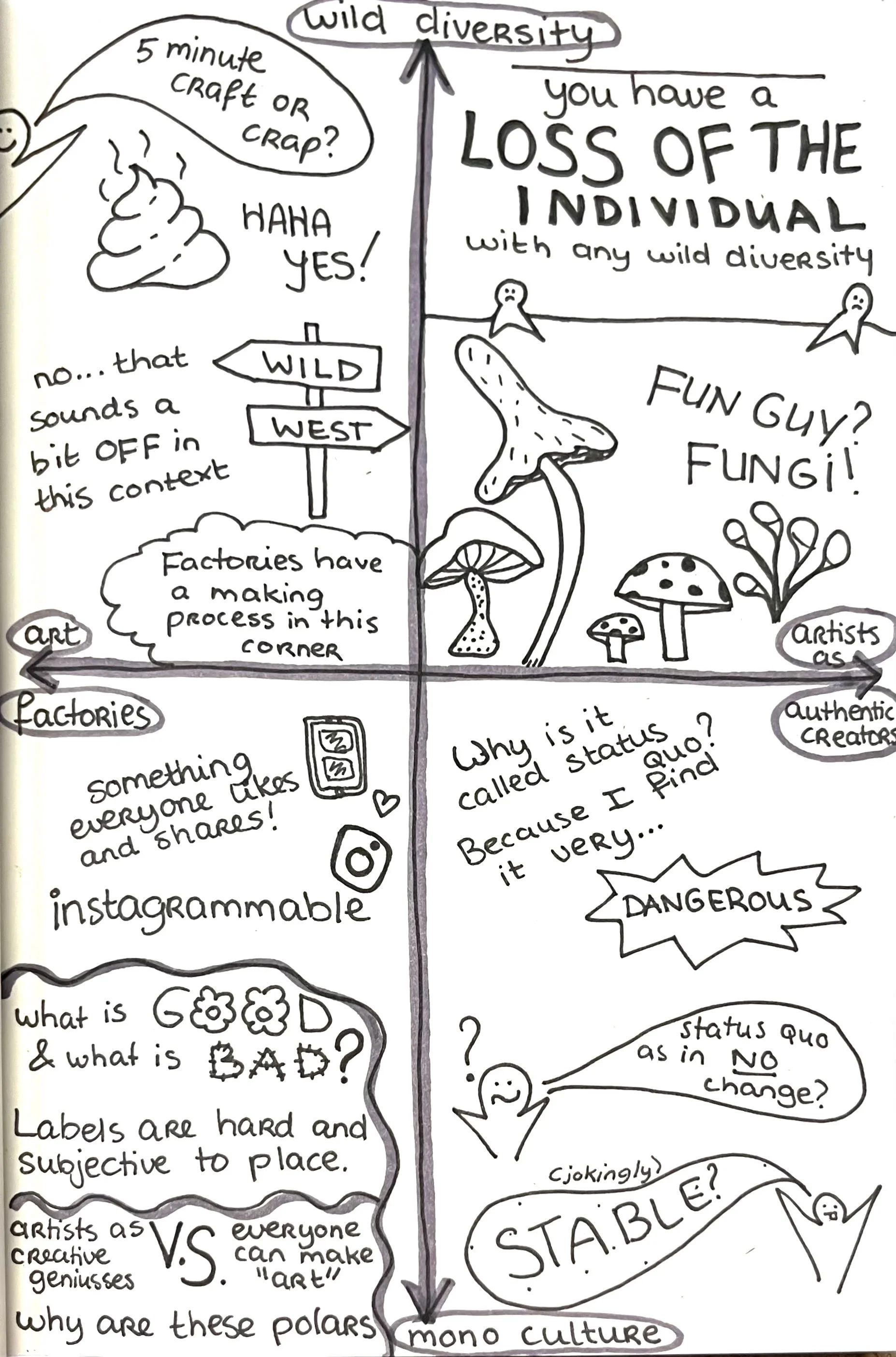Artistic Process Futures and AI Workshops
The potential of AI for the artistic process remains ambiguous. Open questions range from what role and form AI technologies should assume (e.g., preventing unintended consequences that stymie creativity), to how artists can responsibly use purpose-built AI tools (e.g., ensuring algorithmic bias is not hard-wired around Western aesthetics), given the political and social reach of the machine-learning approaches upon which such technologies are based.
To support artists in disambiguating and cultivating a vision of their artistic process as viewed within the scope of current advances in AI, we aimed to guide professional artists (from sculptors to installation artists) in: (1) exploring evolving scenarios around the intersection of art and AI; (2) making these scenarios tangible through the design of speculative artifacts that enable artists and others to reflect critically on artistic process futures; and (3) articulating an artistic and epistemological point of view in the form of a collaborative manifesto, intended for wider audiences.
To achieve these aims, we developed, pilot tested, and facilitated a one-day, three-stage workshop. Stage 1 was a guided brainstorm for ‘prehearsing the future’ and envisioning future scenarios, a method developed by the Brussels-based transdisciplinary collective and ‘Hybrid Reality Lab’, FoAM (fo.am) (Kuzmanovic & Gaffney, n.d.), based on work by Schwartz (1998). Participants engaged in a collaborative mindmapping on artistic process futures, followed by discussing and discovering driving forces behind art and AI in breakout groups, using pre-existing STEEP foresight cards (IVTO, 2012) and our own custom-made set of arts and culture driver cards. Via sticker voting, participants ranked these forces in terms importance and uncertainty, selecting critical uncertainties (e.g., artistic authenticity, power relations) to act as labels for a two-dimensional scenario matrix. Additionally, starter scenarios were created offering different visions of artistic process futures.
During Stage 2, the same breakout groups made the future scenarios of the two-dimensional scenario matrix tangible by designing speculative artifacts. Each group was assigned one future scenario to focus on and their artifacts could be diegetic prototypes of an imagined AI tool or other evidence of the future scenario. For this stage, participants were encouraged to work with low-fidelity office & crafting materials. At the end of stage 2, groups presented their speculative artifacts and participated in a wider discussion on possible and preferable AI futures for the artistic process. Inspiration for both activities was based on the futuring exercises and speculative design case studies described in Mitrović et al. (2021).
In Stage 3, participants co-authored a final manifesto communicating a collective vision of artistic process futures and AI. For this purpose, a special Arts + AI edition of the MANIFESTO! card game (based on work by Ashby et al., 2019) was developed. Using dot voting, participants decided upon the tone of the manifesto. Eventually, a participant-proposed tone was chosen “uncertain”. Working in smaller groups, participants drafted sections of the final manifesto via a round-robin writing sprint. This stage ended with a collaborative writing session for the final manifesto around the uncertainty of AI and artistic processes.
For more information on the workshop, read our Zine and/or our ACM publication.
References
Ashby, S., Hanna, J., Matos, S., Nash, C., & Faria, A. (2019). Fourth-wave HCI Meets the 21st Century Manifesto: Creative Subversion in the’CHI-verse’. In Proceedings of Halfway to the Future. ACM. [url]
IVTO. (2012). STEEP Foresight Cards. [Card Tool]. ITVO. [url]
Kuzmanovic, M., & Gaffney, N. (n.d.). Prehearsal Pocket Guide. [url]
Mitrović, I., Auger, J., Hanna, J., & Helgason, I. (2021). Beyond Speculative Design: Past–Present–Future. University of Split. [url]
Schwartz, P. (2012). The Art of the Long View: Planning for the Future in an Uncertain World. Currency.


























